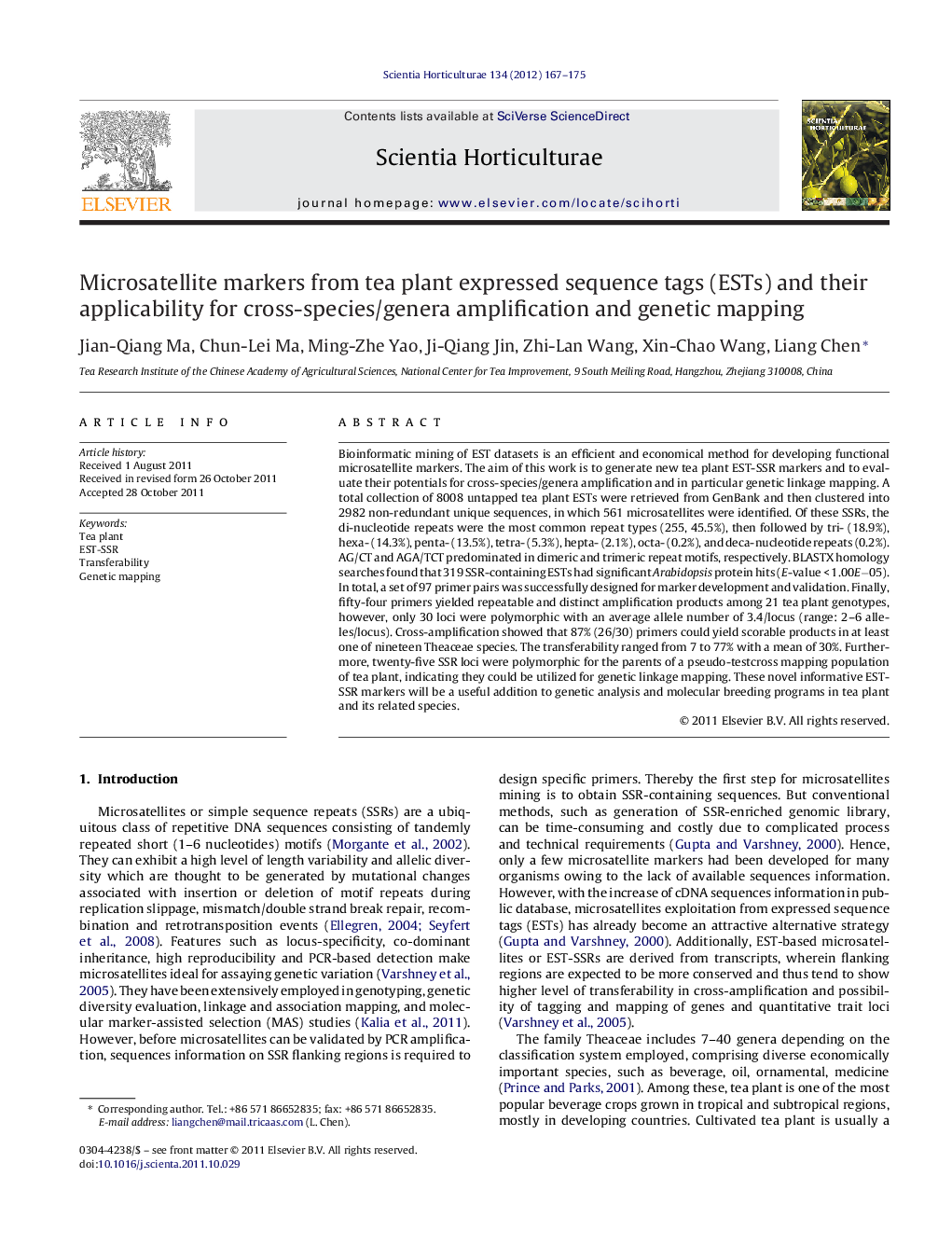| Article ID | Journal | Published Year | Pages | File Type |
|---|---|---|---|---|
| 4567774 | Scientia Horticulturae | 2012 | 9 Pages |
Bioinformatic mining of EST datasets is an efficient and economical method for developing functional microsatellite markers. The aim of this work is to generate new tea plant EST-SSR markers and to evaluate their potentials for cross-species/genera amplification and in particular genetic linkage mapping. A total collection of 8008 untapped tea plant ESTs were retrieved from GenBank and then clustered into 2982 non-redundant unique sequences, in which 561 microsatellites were identified. Of these SSRs, the di-nucleotide repeats were the most common repeat types (255, 45.5%), then followed by tri- (18.9%), hexa- (14.3%), penta- (13.5%), tetra- (5.3%), hepta- (2.1%), octa- (0.2%), and deca-nucleotide repeats (0.2%). AG/CT and AGA/TCT predominated in dimeric and trimeric repeat motifs, respectively. BLASTX homology searches found that 319 SSR-containing ESTs had significant Arabidopsis protein hits (E-value < 1.00E−05). In total, a set of 97 primer pairs was successfully designed for marker development and validation. Finally, fifty-four primers yielded repeatable and distinct amplification products among 21 tea plant genotypes, however, only 30 loci were polymorphic with an average allele number of 3.4/locus (range: 2–6 alleles/locus). Cross-amplification showed that 87% (26/30) primers could yield scorable products in at least one of nineteen Theaceae species. The transferability ranged from 7 to 77% with a mean of 30%. Furthermore, twenty-five SSR loci were polymorphic for the parents of a pseudo-testcross mapping population of tea plant, indicating they could be utilized for genetic linkage mapping. These novel informative EST-SSR markers will be a useful addition to genetic analysis and molecular breeding programs in tea plant and its related species.
► Novel EST-SSR markers were developed for tea plant. ► The mean polymorphism information content (PIC) value was 0.42, indicating these EST-SSRs had moderate allelic diversity. ► Twenty-six (87%) of the EST-SSRs showed robust inter-specific/generic transferability among nineteen Theaceae species. ► Twenty-five (83%) of the EST-SSRs were genetic linkage mappable.
